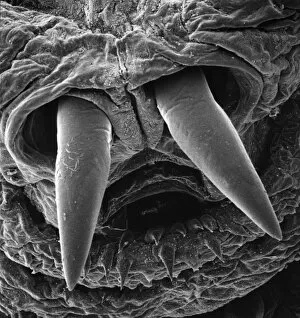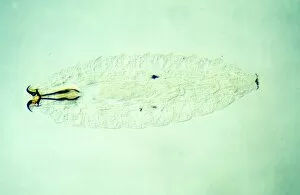Oestridae Collection
"Exploring the Intriguing World of Oestridae: From Botfly Larvae to Rhinoceros Stomach Botflies" Did you know that the anus of a bot fly is where it lays its eggs
All Professionally Made to Order for Quick Shipping
"Exploring the Intriguing World of Oestridae: From Botfly Larvae to Rhinoceros Stomach Botflies" Did you know that the anus of a bot fly is where it lays its eggs? One such species, Dermatobia hominis, commonly known as the human botfly, uses this unique method to ensure its offspring's survival. These larvae develop inside their host's skin until they are ready to emerge. But Dermatobia hominis isn't the only member of the Oestridae family with fascinating life cycles. Horse botfly larvae (C016/5712) also belong to this group and can be found infesting equines. Their presence can cause discomfort for horses and prompt owners to take preventive measures against these pesky parasites. Speaking of botfly larvae, Oestridae boasts several other intriguing species within its ranks. These include Gyrostigma rhinocerontis, which targets rhinoceroses' stomachs during their larval stage. The complex relationship between these creatures and their hosts continues to captivate scientists worldwide. Not limited to land-dwelling animals, Oestrus ovis represents another remarkable member of Oestridae—the ship nasal botfly larva. This peculiar insect chooses sheep as its primary host and resides in their nasal passages during development. The diversity within Oestridae showcases nature's ability to adapt and survive in various environments through intricate life cycles. While some may find these creatures unsettling or even repulsive due to their parasitic nature, studying them provides valuable insights into evolutionary biology and ecological interactions. So next time you come across an image or mention of an oestridae species like Dermatobia hominis or Gyrostigma rhinocerontis—remember that there is much more than meets the eye when it comes to these captivating botflies.













